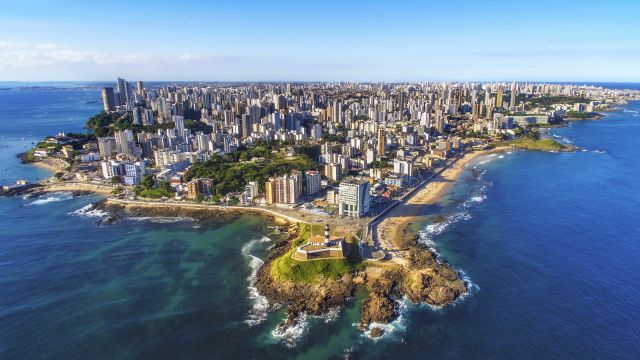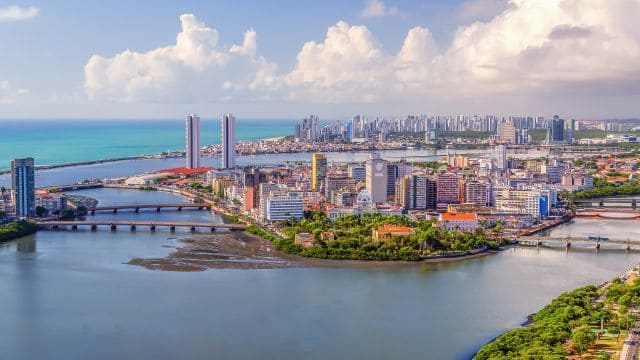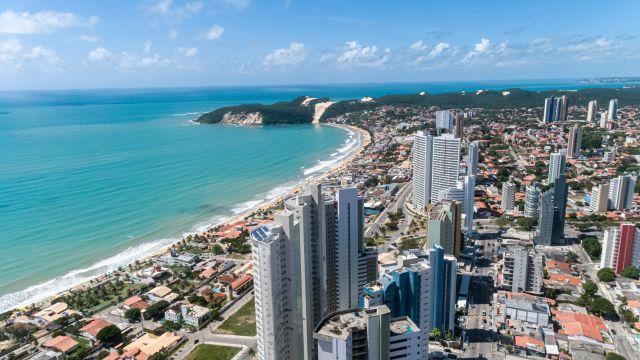What’s the climate like in Foz do Iguaçu?
The current climate in Foz do Iguaçu features temperatures ranging from a high of 32°C to a low of 23°C throughout the year. The average yearly temperature is around 29°C. At night, temperatures in the colder months average around 12°C and in the warmer months around 22°C.
The highest temperature recorded in Foz do Iguaçu in recent years was 41°C in September 2020. The lowest daytime temperature recorded was 9°C in August 2018.
On average, Foz do Iguaçu receives 1784 mm of precipitation each year. For comparison, New York gets 1142 mm of precipitation annually.
Curious about the weather in other parts of Brazil? Check out the climate and weather for spots like Rio de Janeiro, Salvador, Pipa, or explore other destinations in Brazil.
Best time to visit Foz do Iguaçu?
The best time to visit Foz do Iguaçu for sunny weather is June through September. During this period, you'll have nice temperatures and not too much rain, making it a great time to visit Foz do Iguaçu. In the other months of the year, there's too much rain or the temperature isn't ideal for a visit if you want sunny and pleasant weather.
Climate Table of Foz do Iguaçu
The climate table of Foz do Iguaçu shows the average temperatures, rainfall, and UV index per month. The table provides an overview of the average day and night temperatures in degrees Celsius, the total amount of rainfall in millimeters, the total snowfall in centimeters, and the UV index for each month. Rainfall is always measured as water, even if it's snow or hail.
| Jan | Feb | Mar | Apr | May | Jun | Jul | Aug | Sep | Oct | Nov | Dec | |
|---|---|---|---|---|---|---|---|---|---|---|---|---|
| Temp. max (°C) | 32 | 32 | 31 | 28 | 24 | 23 | 24 | 26 | 29 | 30 | 30 | 32 |
| Temp. min (°C) | 22 | 21 | 20 | 18 | 15 | 13 | 13 | 14 | 17 | 19 | 19 | 21 |
| Precipitation | ||||||||||||
| Precipitation (mm) | 211 | 153 | 177 | 151 | 142 | 110 | 72 | 96 | 100 | 233 | 153 | 186 |
| UV Index | 9 | 9 | 8 | 7 | 5 | 5 | 6 | 7 | 8 | 8 | 8 | 9 |
Click on the month name to see more weather details, like daily averages, temperatures, and precipitation for the past years in that month.
- Average yearly temperature: 29°C
- Highest temperature: 32°C in January, February and December
- Lowest temperature: 23°C in June
- Precipitation: 1784 mm per year, averaging 149 mm per month
- Driest months: 72 mm in July, 96 mm in August and 100 mm in September
- Wettest months: 233 mm in October, 211 mm in January and 186 mm in December
Table of Contents
Average Temperature per Month in Foz do Iguaçu
This graph shows the average maximum temperatures per month in Foz do Iguaçu, Brazil. The temperatures are shown in degrees Celsius and the average is calculated based on the recorded temperatures per month from past years.
Average Precipitation per Month in Foz do Iguaçu
This graph shows how much rainfall Foz do Iguaçu, Brazil, gets on average per month. Rainfall is always measured as water, even if it's snow or hail. This makes it easy to compare how much has fallen, regardless of the form of precipitation. The amount of rainfall is measured in millimeters, and the average is calculated based on the recorded rainfall per month from past years.
Average UV Index per Month in Foz do Iguaçu
This graph shows the average UV index per month in Foz do Iguaçu, Brazil. The UV index indicates the intensity of ultraviolet radiation and ranges from 0 to a maximum of 11.
Yearly Temperature in Foz do Iguaçu
This graph shows the average yearly temperature in Foz do Iguaçu, Brazil. The yearly temperature, expressed in degrees Celsius, is the average of all twelve monthly temperatures summed up for that year.
Total Yearly Precipitation in Foz do Iguaçu
This chart shows the total yearly precipitation in Foz do Iguaçu, Brazil, over the past few years. The total yearly precipitation, measured in millimeters, is the sum of all the rain that fell in the twelve months of that year.
Weather experiences in Foz do Iguaçu
The weather in Foz do Iguaçu is rated an average of 0 out of 5 stars by 6 visitors. Have you been to Foz do Iguaçu? Share your weather experience to help other visitors.
Have you been to Foz do Iguaçu?
Share your weather experiences in Foz do Iguaçu.
Average weather in Foz do Iguaçu by month
Click on a month below to see detailed weather info for Foz do Iguaçu. Based on historical weather data, you can see the average temperature, precipitation, wind, and UV index for each day of the month.
Popular destinations in Brazil
Discover the climate of these popular destinations in Brazil.












